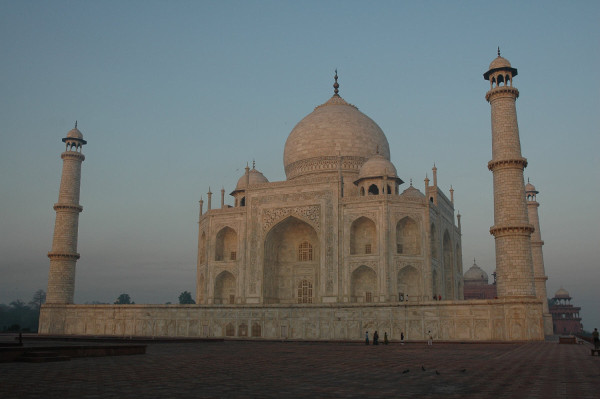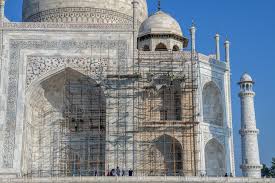|
'Dirty' Taj Mahal Getting Mud Bath Cleansing
January 23, 2018
Workers are covering the Taj Mahal, one of the world's most famous monuments, with mud. It's all part of an effort to give the 17th-Century mausoleum a good cleaning. It's not just normal mud, though. What cleaners are applying is known as Fuller's earth, a mud paste that serves as a method of absorption of the large amounts of dirt and grease that have accumulated on the famous white walls through the years. The mud is left to dry for a day or two, held in place by polythene sheets. Then, just like the mud packs that people put on their faces, the Taj Mahal mud coverings will be washed off. Similar methods of preservative cleaning have been used in Italy and in the United Kingdom. The mud applications are part of a restoration effort that began in 2015. The monument, built near Agra by Emperor Shah Jahan for his wife Mumtaz Mahal, has long been the recipient of good natural cleaning, courtesy of normal monsoon rains. However, as the surrounding population has grown and the numbers of tourists visiting the famed monument have steadily climbed, the amount of population surrounding the monument has made itself felt by turning the white marble facade to a large amount of yellow and black. Another source of discoloration has been excretions by mosquitoes drawn by pollution in the nearby Yamuna River. All in all, it makes for a bit of an eyesore to monument officials and to people visiting. Most people visiting want to take photographs, of the monument itself and of themselves in or next to it, and so monument officials have worried that the scaffolding necessary for workers to be able to reach the great heights of the monument's dome in order to apply the mud will be an eyesore too far. Cleaning is time-consuming and has been going for a few months, and tourist numbers have dropped but not significantly. Monument officials are looking to employ scaffolding made of bamboo when it's time to clean the dome because normal metal scaffolding would be too heavy for such delicate work so high up. Bamboo scaffolding was used a few decades ago. The Taj Mahal has some of the world's highest tourist numbers, with an estimated annual visitor number in the several millions.
|
Social Studies for Kids |
Social Studies for Kids
copyright 2002–2019
David White







